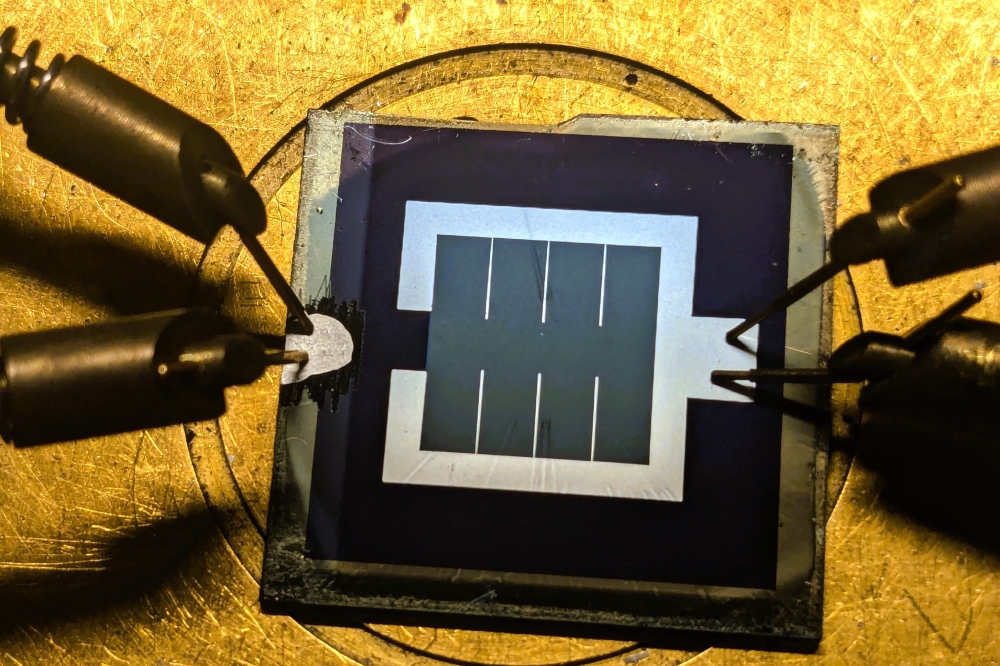Moving with the times: From silicon to SiC metrology

BY YUJI ASAKAWA FROM LASERTEC
In the pages of this twentieth anniversary issue of Compound Semiconductor, you can find several features that look back over the last two decades of this industry. At Lasertec of Shin-Yokohoma, Japan, however, our origins can be traced back even further to our inception in 1960. Since then we have been serving the needs of various high-technology industries, including the semiconductor, compound semiconductor, renewable energy and flat panel display sectors.
We were founded by Yasushi Uchiyama, an innovative and entrepreneurial technologist. When he launched our company it initially traded under the name Tokyo ITV, designing and developing the imaging parts of an X-ray camera for Matsushita (Panasonic). But in 1962 our company switched its name to NJS (Nihon Jido Seigyo "“ Japan Automatic Control), and emerged as a fully independent entity.
![]()
The first photomask inspection tool Modela 1MD1
Since our inception, we have followed the philosophy of our founder, which is to develop and release an innovative product every year. Pursuing this ideal has led us to develop many key tools that help scientists and engineers all over the world to reach their goals.
A major breakthrough for us came in 1976, when we developed and released the world's first photomask defect inspection system. This instrument soon became a huge commercial success in Japan, and in 1978 we started to receive orders from overseas. As installations increased around the globe, it made sense for us to expand our worldwide presence, a goal we accomplished by establishing three US offices − in California, New York and Texas.
In 1986 we developed and released yet another innovative product − the Color Laser microscope. Sales of this soared, prompting another name change to Lasertec Corporation. At that time, the word "˜laser' had futuristic connotations, so it seemed an apt choice for a company with such a forward-looking technology roadmap.
During the intervening years we have developed and released many innovative product lines. Over this time we have strived to determine the technologies that will shape the future − and this has guided the directions we have taken, including our decision to place a great deal of emphasis and resource on the development of tools for the compound semiconductor industry. This includes metrology for SiC, a material for making power semiconductors that can enable greater efficiency in numerous electrical systems. For this reason, high quality SiC epitaxial wafers are a critical component in the supply chain.
Defect reduction is one of the most important factors for the mass production of high-quality SiC wafers. These imperfections are most often generated during grind and epitaxial processes, and it is critical to accurately and quickly detect and categorize them, as they impair device performance. By eliminating these killer defects early in the process, it is possible to ensure a high device yield in mass production. These defects can come in various forms, including scratches and epi-defects that arise on the wafer surface, and crystal-related defects, such as basal plane dislocations and stacking faults that are found inside the epilayers.
In 2009, we released our SiC inspection and analysis instrument, SICA. Since then we have undertaken a programme of continuous improvement, transforming this tool into a state-of-the-art system for defect inspection, review and analysis.
The SICA has been a noteworthy success, with installations taking place all over the world, thanks in part to the ability of this tool to deliver high-resolution defect images for highly accurate auto-defect classification.
SICA is capable of identifying a wide range of defects, including carrots, triangles and downfall (see Figure 1 (a)). It is possible to monitor these imperfections during processing with our defect tracing function (see Figure 1 (b)), which can uncover a relationship between defects in the substrate and in the epiwafer (see Figure 1(c)).
We are now exploring a photoluminescence-based technology that will allow the detection of crystal defects at a significantly higher throughput than before.
Figure 1 (a) The SICA tool can identify a range of defects, including carrots, triangles and downfalls. (b) The defect trace function can identify the exact location of random defects by compensating for misalignments caused by patterning and/or loading. (c) Imperfections uncovered in actual samples with the defect tracing function. (d) The photoluminescence capability being developed for the SICA tool can uncover defects that are confirmed by etching with potassium hydroxide.
Our history of success shows that we have a great track record in identifying and delivering the tools that enable engineers to manufacture great products with high yields. SiC is a material that is destined to make a big impact in the power electronics industry, and we are here to support this effort with an inspection tool that can drive up yield and allow emerging devices to be more competitive with silicon incumbents.


































